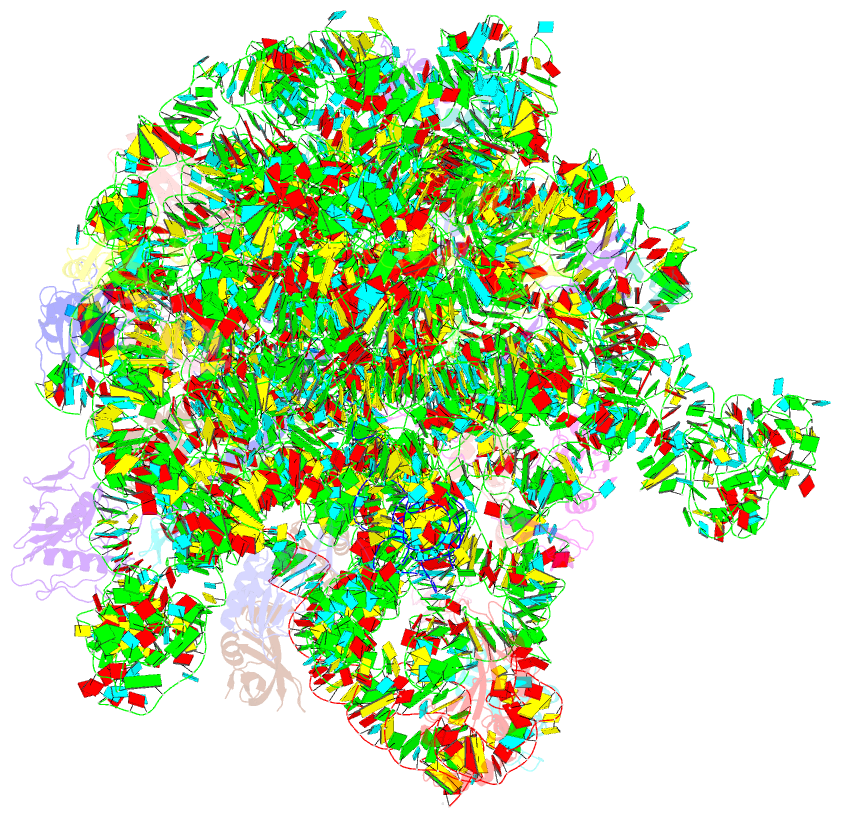Summary information and primary citation
- PDB-id
- 6qdw; SNAP-derived features in text and JSON formats;
DNAproDB
- Class
- ribosome
- Method
- cryo-EM (2.83 Å)
- Summary
- cryo-EM structure of the 50s ribosomal subunit at 2.83 angstroms with modeled gbc secm peptide
- Reference
- Schulte L, Mao J, Reitz J, Sreeramulu S, Kudlinzki D, Hodirnau VV, Meier-Credo J, Saxena K, Buhr F, Langer JD, Blackledge M, Frangakis AS, Glaubitz C, Schwalbe H (2020): "Cysteine oxidation and disulfide formation in the ribosomal exit tunnel." Nat Commun, 11, 5569. doi: 10.1038/s41467-020-19372-x.
- Abstract
- Understanding the conformational sampling of translation-arrested ribosome nascent chain complexes is key to understand co-translational folding. Up to now, coupling of cysteine oxidation, disulfide bond formation and structure formation in nascent chains has remained elusive. Here, we investigate the eye-lens protein γB-crystallin in the ribosomal exit tunnel. Using mass spectrometry, theoretical simulations, dynamic nuclear polarization-enhanced solid-state nuclear magnetic resonance and cryo-electron microscopy, we show that thiol groups of cysteine residues undergo S-glutathionylation and S-nitrosylation and form non-native disulfide bonds. Thus, covalent modification chemistry occurs already prior to nascent chain release as the ribosome exit tunnel provides sufficient space even for disulfide bond formation which can guide protein folding.





